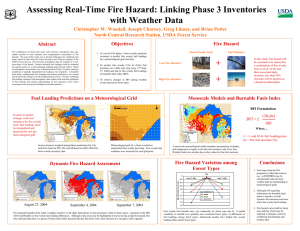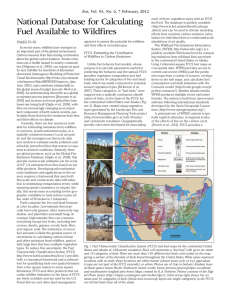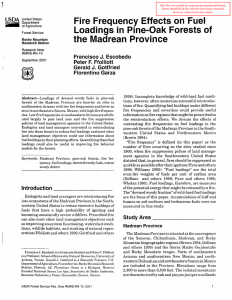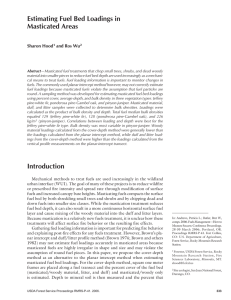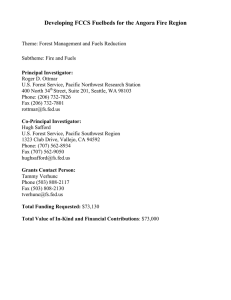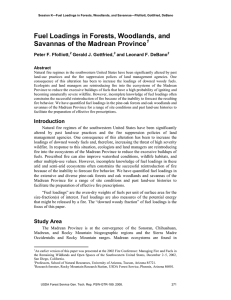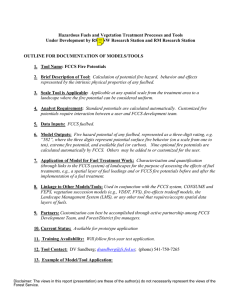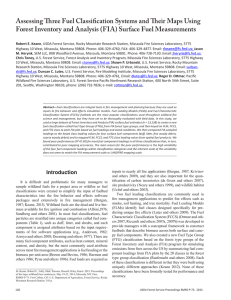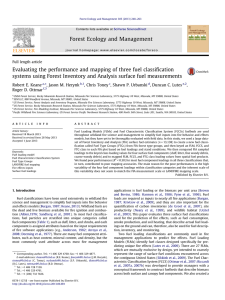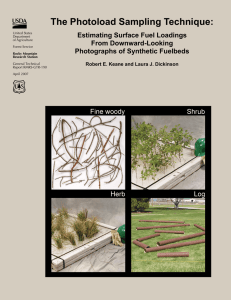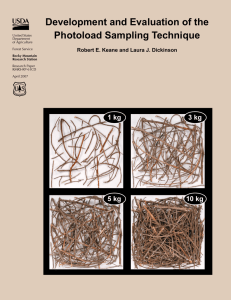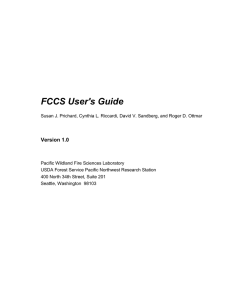from Wildfire for North America Project Title:
advertisement
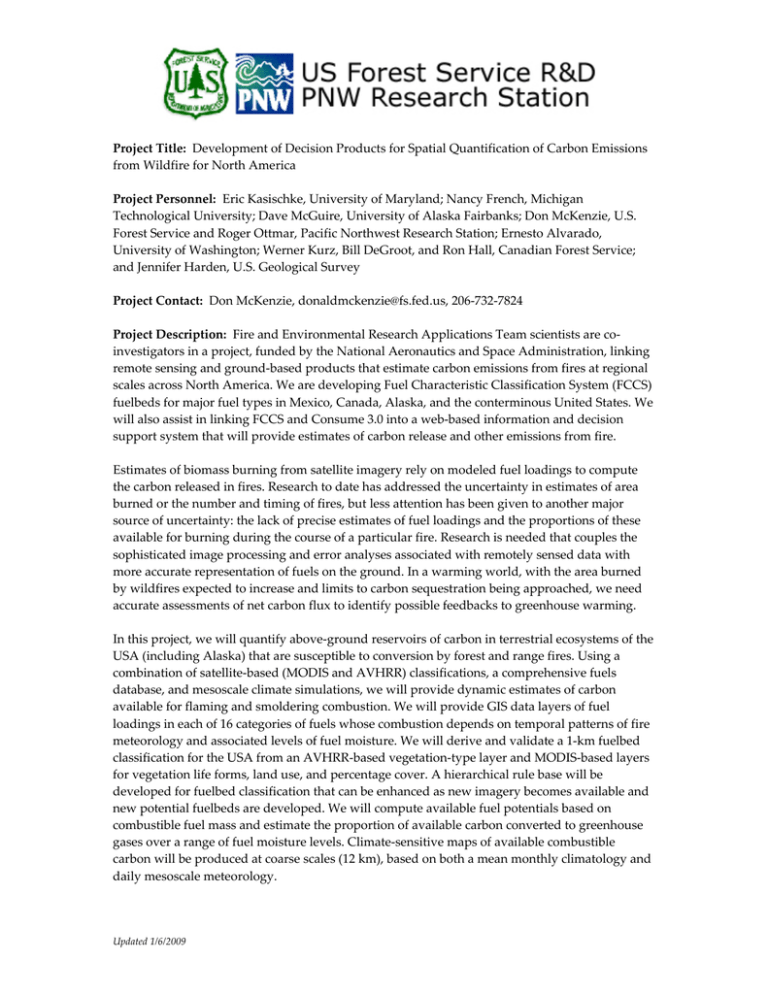
Project Title: Development of Decision Products for Spatial Quantification of Carbon Emissions from Wildfire for North America Project Personnel: Eric Kasischke, University of Maryland; Nancy French, Michigan Technological University; Dave McGuire, University of Alaska Fairbanks; Don McKenzie, U.S. Forest Service and Roger Ottmar, Pacific Northwest Research Station; Ernesto Alvarado, University of Washington; Werner Kurz, Bill DeGroot, and Ron Hall, Canadian Forest Service; and Jennifer Harden, U.S. Geological Survey Project Contact: Don McKenzie, donaldmckenzie@fs.fed.us, 206-732-7824 Project Description: Fire and Environmental Research Applications Team scientists are coinvestigators in a project, funded by the National Aeronautics and Space Administration, linking remote sensing and ground-based products that estimate carbon emissions from fires at regional scales across North America. We are developing Fuel Characteristic Classification System (FCCS) fuelbeds for major fuel types in Mexico, Canada, Alaska, and the conterminous United States. We will also assist in linking FCCS and Consume 3.0 into a web-based information and decision support system that will provide estimates of carbon release and other emissions from fire. Estimates of biomass burning from satellite imagery rely on modeled fuel loadings to compute the carbon released in fires. Research to date has addressed the uncertainty in estimates of area burned or the number and timing of fires, but less attention has been given to another major source of uncertainty: the lack of precise estimates of fuel loadings and the proportions of these available for burning during the course of a particular fire. Research is needed that couples the sophisticated image processing and error analyses associated with remotely sensed data with more accurate representation of fuels on the ground. In a warming world, with the area burned by wildfires expected to increase and limits to carbon sequestration being approached, we need accurate assessments of net carbon flux to identify possible feedbacks to greenhouse warming. In this project, we will quantify above-ground reservoirs of carbon in terrestrial ecosystems of the USA (including Alaska) that are susceptible to conversion by forest and range fires. Using a combination of satellite-based (MODIS and AVHRR) classifications, a comprehensive fuels database, and mesoscale climate simulations, we will provide dynamic estimates of carbon available for flaming and smoldering combustion. We will provide GIS data layers of fuel loadings in each of 16 categories of fuels whose combustion depends on temporal patterns of fire meteorology and associated levels of fuel moisture. We will derive and validate a 1-km fuelbed classification for the USA from an AVHRR-based vegetation-type layer and MODIS-based layers for vegetation life forms, land use, and percentage cover. A hierarchical rule base will be developed for fuelbed classification that can be enhanced as new imagery becomes available and new potential fuelbeds are developed. We will compute available fuel potentials based on combustible fuel mass and estimate the proportion of available carbon converted to greenhouse gases over a range of fuel moisture levels. Climate-sensitive maps of available combustible carbon will be produced at coarse scales (12 km), based on both a mean monthly climatology and daily mesoscale meteorology. Updated 1/6/2009 Expected products from the project include spatial data layers, refereed publications, source code for software modules, a knowledge base that includes inferential rules for classifying fuels and automating future classifications, and complete metadata. The spatial data layers will include base GIS and netCDF layers of fuel loadings, along with summary statistics for available carbon from both monthly and daily modeling. A web server will also provide access to more detailed output from applying climate scenarios. Project Deliverables: • Refereed publications submitted to high-end journals such as Ecological Applications, Journal of Geophysical Research. • U.S. Forest Service General Technical Reports with more detailed description of methods and compact disks with the GIS and netCDF11 layers. • Estimates of fire-susceptible carbon biomass • GIS and netCDF base layers of fuelbed classification (1 km), total fire-available carbon (1 km) and fire-available carbon by combustion phase (1 km) • Rule sets (inference rules and canonical rules – see table) • Downloadable command-line versions of Consume, National fire Danger Rating System, Fire Emission Production Simulator, and scripts to link them. • Metadata for data layers and software modules Project Outcomes: • Improved ability to model the impacts of fire and insects on forest carbon cycling. • New understanding of the role of natural disturbance on terrestrial ecosystem carbon cycling across the boreal forest of North American and the forests of the Western U.S. • Reduction of critical uncertainties on the impacts of natural disturbance on terrestrial carbon cycling • Enable scientists to better forecast how future climate change will impact carbon cycling in North American forests. NetCDF (network Common Data Form) is a set of software libraries and machine-independent data formats that support the creation, access, and sharing of array-oriented scientific data. 1 Updated 1/6/2009






